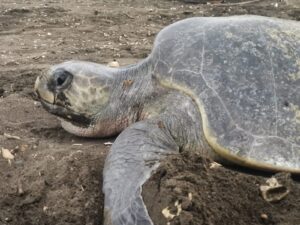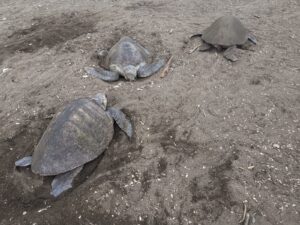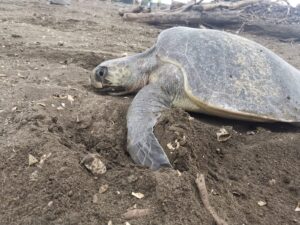It is well known to residents of the area and tourists that throughout the year and especially in the rainy season, Ostional and its surroundings hide a miracle of nature.



Between August and December hundreds of thousands of Ridley sea turtles (Lepidochelys kempii) arrive at the Ostional National Wildlife Refuge to bury their eggs under the sand and each nest has an average of 100 eggs. Between a month and 45 days later happens the second part of the magic, when the hatching begins.
This unique show has attracted more and more visitors to the area, which increases the risk factors for the conservation of this species that is -according to the IUCN- critically endangered and in a state of threat in Costa Rica.
We want to share with you 5 rules of the RNVSO that allow the preservation of this natural phenomenon. It is important to remember that the Refuge also includes the beaches of Pelada and Guiones, so the practices are prohibited throughout the protected area:

1. Bonfires on the beach:
Although they seem like the perfect ending for a sunset on the beach, they represent an imminent threat for the nests. Refuge records indicate finding entire nests incinerated under fires. In addition, they affect other species that live in the sand and in the dry season the wind can lift the embers causing a forestal fire. Read our full article about it here.

2. Pets are not allowed.
While we’d love our furry friends to join us for a day at the beach, dogs can have fun digging in the sand and digging up entire nests.

3. Take the trash with you when you leave the beaches.
The hatchlings encounter many obstacles as soon as their break the egg and not all of them survive, so it is our responsibility to leave their way to the water as clear as possible, as well as to prevent them from being harmed by garbage or plastic once they are in the water.

4. In sightings or tours, use only the lights allowed by the guides.
Adult turtles prefer dimly lit spaces to bury their eggs, this coincides with the fact that arrival peaks are usually the week before the full moon. If you are going to enjoy this show, respect the tour guide’s instructions regarding flashlights, cell phone flash and pictures.

5. Vehicles allowed.
The beaches belonging to the RNVSO have a strict ban on motorized vehicles on the sand. In addition to being harmful to turtle nests, they modify the ecosystem by creating new paths or watercourses after their constant use.
Now that you have all the precautions to take care of the Ridley Sea turtles throughout the refuge’s territory, you can enjoy a responsible coexistence with nature.
